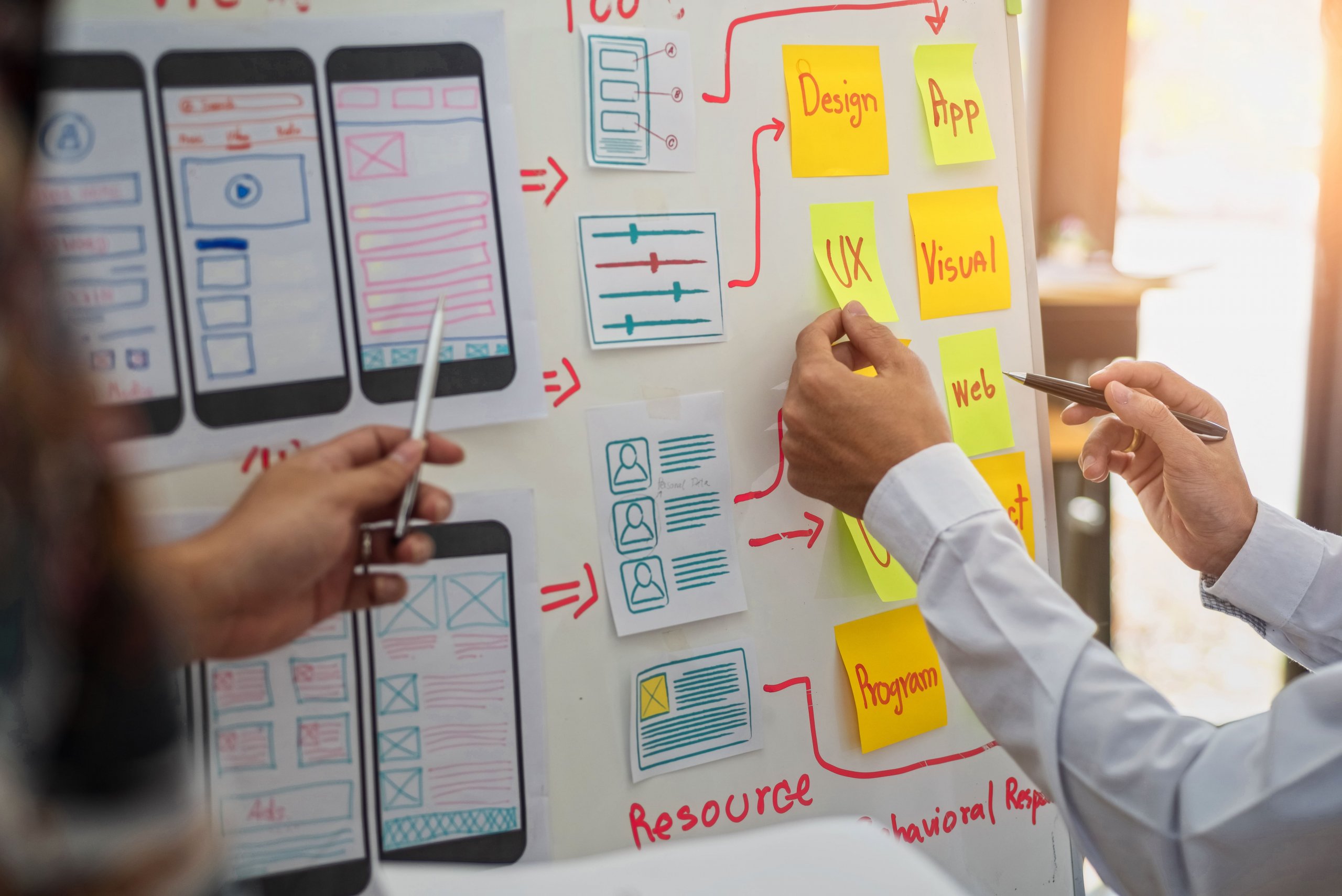A dedicated discovery phase is increasingly becoming indispensable in effective digital product development. The benefits of carrying out this phase and its impact on a real understanding of the design challenge cannot be overestimated. At a strategic level, it is worth mentioning, for example:
- Understanding the key problem or challenge faced.
- Understanding the context of users, business, and technology.
- Developing a coherent vision for the target solution that meets both end-user needs and business objectives.
Looking at it purely from a design perspective, the discovery process helps to reduce risks. This phase allows you to precisely define the project’s scope and ensure that both parties – Client and Agency – understand it the same way. This translates, for example, into easier planning of the work involved in implementing the agreed vision. We have already covered Project Discovery itself in a previous article on the role of the business analyst in this process. But before we take a closer look at the role of UX in the discovery phase, let’s consider what UX Design actually is.
What is UX Design, really?
UX Design is often simplified to designing user experiences. Some even stress that we don’t design for ourselves but for the end users. By looking more closely, you will see this is not entirely true.
Why?
What about the brand’s business requirements? What about technological capabilities, timelines and budgets? Every project is impacted by a unique combination of business, technological, and organizational factors. UX must seamlessly balance all these perspectives and propose optimal solutions to achieve the stated goal. Considering this fact, UX kind of links users with business and technology. Additionally, the multitude of variables and factors influencing the final shape of the developed solution means that UX design is not so much about designing experiences as it is about influencing the probability of a good user experience. The likelihood of success increases as we diligently work through the discovery phase.
The Role of UX in Project Discovery
UX plays a vital role in the discovery phase by not only understanding the context of end-users but also finding joint points with the business perspective. To achieve this, it is important from a UX perspective to ask fundamental questions, such as:
- Do we understand the problem we want to solve?
- How do we know we need a website or app?
- Are we sure a mobile app is the best solution for our business problem?
- Who are the end-users, and what are their needs and problems?
- Do users’ goals align with our business goals?
The discovery phase is the right stage to consider even the most basic matters. Even seemingly obvious assumptions can be reconsidered and new insights gained by carefully searching for and verifying answers to fundamental questions. These answers are crucial from a user experience perspective, serving as the point of reference for the concept that ultimately links the needs of the end-users with those of the business.
UX Focus and Techniques in Discovery
There is no one-size-fits-all UX methodology in the discovery phase. We can use Design Thinking, Design Sprints or Double Diamond frameworks. The set of tools and techniques heavily depends on the project context, goals, and client requirements, as well as data availability, timeframes, and budget. However, regardless of these aspects, there are several tasks that UX specialists focus on during the Discovery phase:
- Conducting client and stakeholder interviews – A comprehensive briefing with the client enables us to gain an understanding of the initial project landscape. We aim to identify the goals, expectations, constraints, and any initial ideas or hypotheses that the client brings to the table.
- Collecting user data through interviews and other means – The focus here is on understanding the perspectives of the end-users, their needs, problems, behaviours, and contexts of use, which will allow us to align with the business perspective we have previously learned.
- Benchmarking – This involves learning about the current processes and solutions utilized by both direct and indirect competitors, as well as identifying potential areas where competitive advantage can be gained.
- Developing UX strategy – This is a collection of key strategic assumptions in the context of user experience based on previously collected user and business data. This strategy allows us to define the primary end-user personas, develop Customer Journey maps that illustrate the users’ path to satisfy identified needs and define the value proposition delivered by the digital product.
- Creating UX concept – This is based on the developed UX strategy and visualizes the ideas and directions that emerge from the discovery phase. It is important to note that the UX concept developed in the discovery phase should not be confused with the target solution design. At this stage, the focus is not on the details of the interface but on the overall visualization to illustrate the initial idea that emerges from discovery. Depending on requirements, this could be a mock-up of 2-3 key views, a segment of an important process, a general information architecture, or a simple prototype to test with users to verify the assumptions that emerge from the Discovery phase at an early stage.
Summary
The success of the discovery phase and the entire digital project depends heavily on the user experience. UX involves more than just understanding the needs and goals of end users. It requires a broader perspective – considering the common points between different contexts such as users, businesses, and technology. At Infinity Group, we guide our clients through the Discovery phase with this philosophy in mind.
